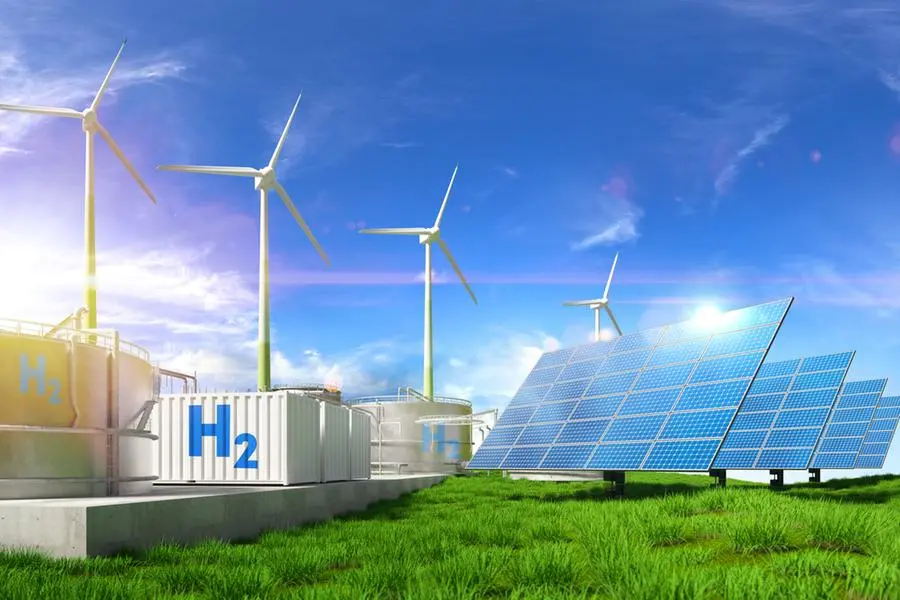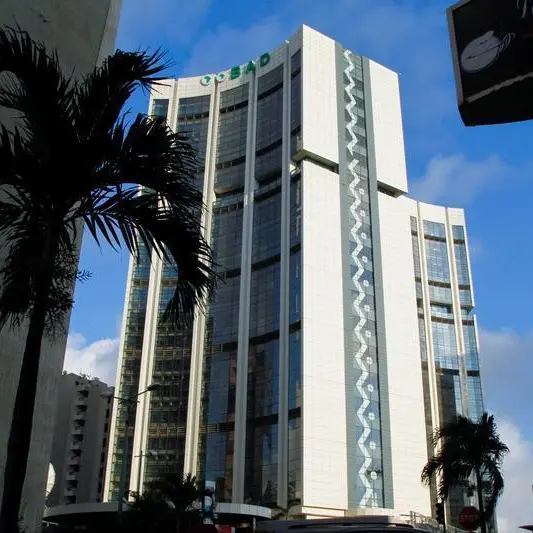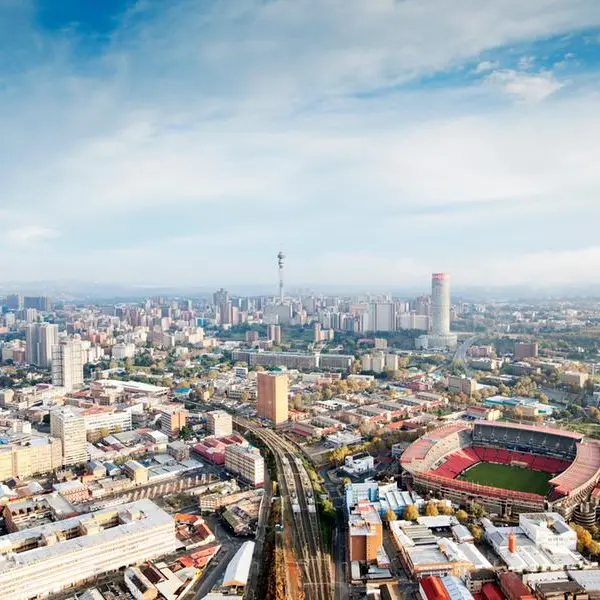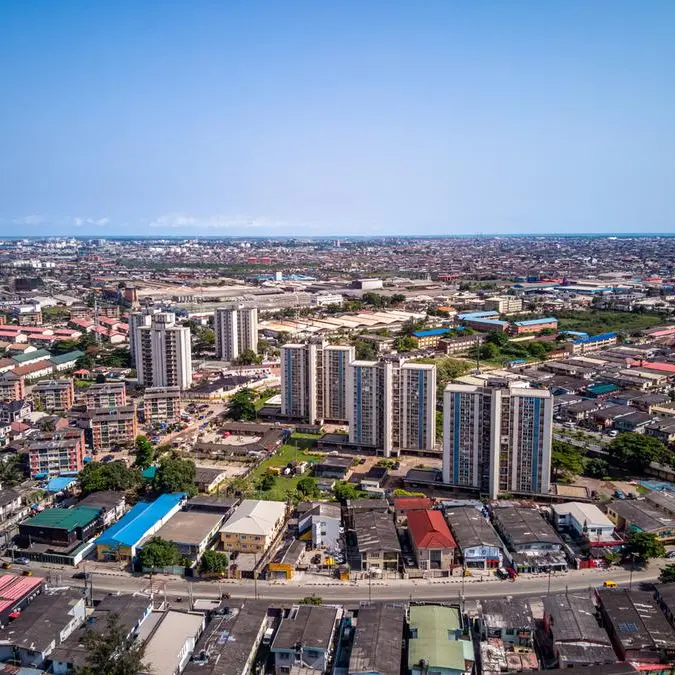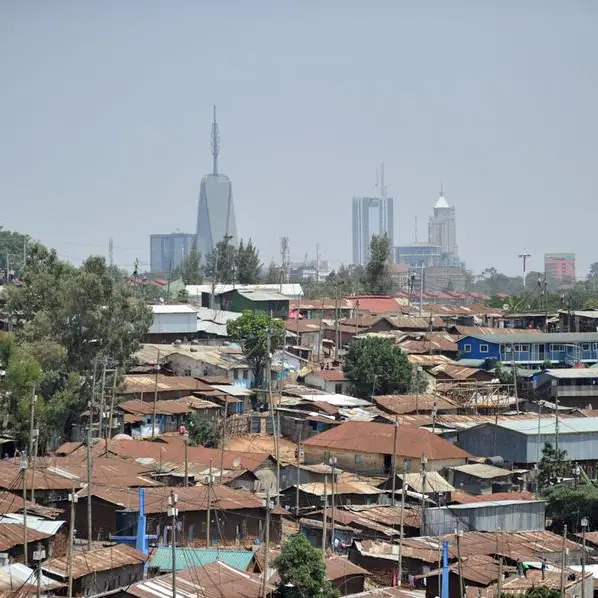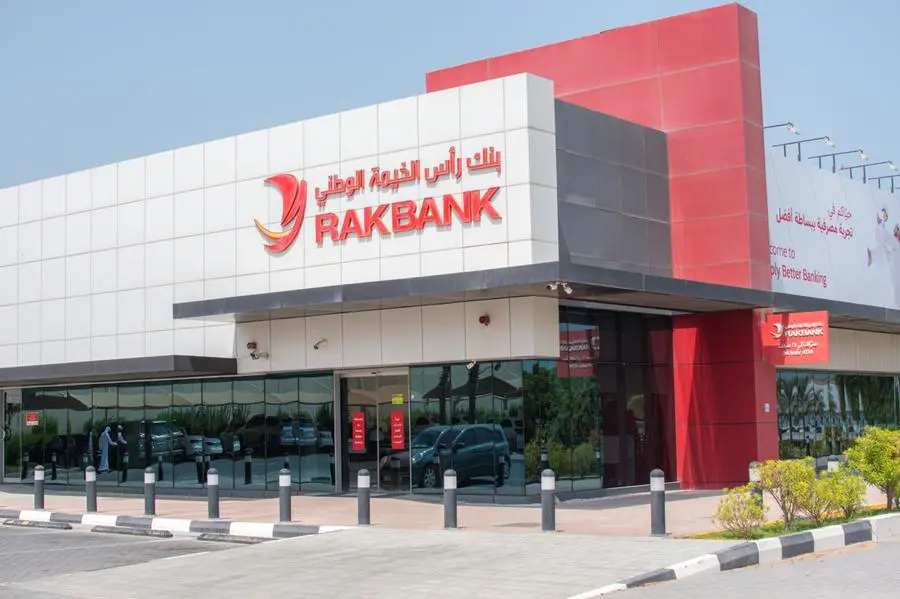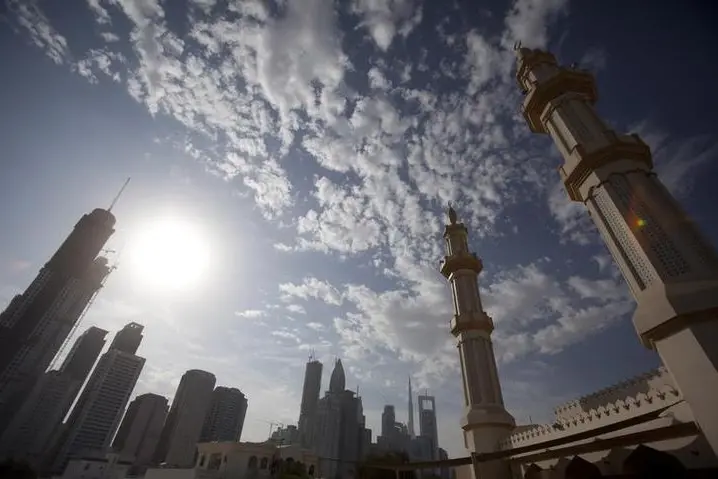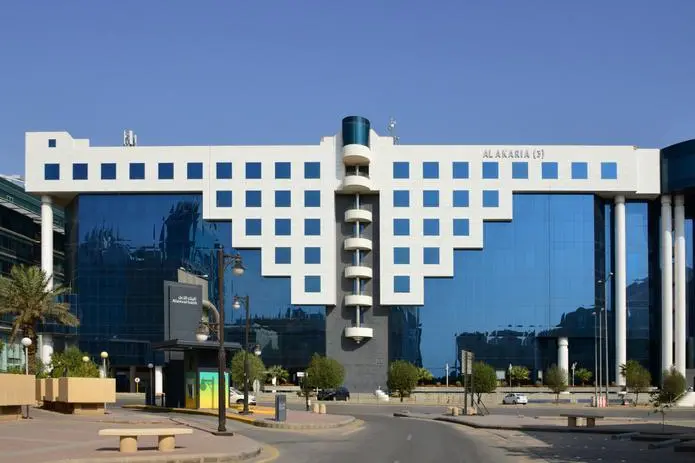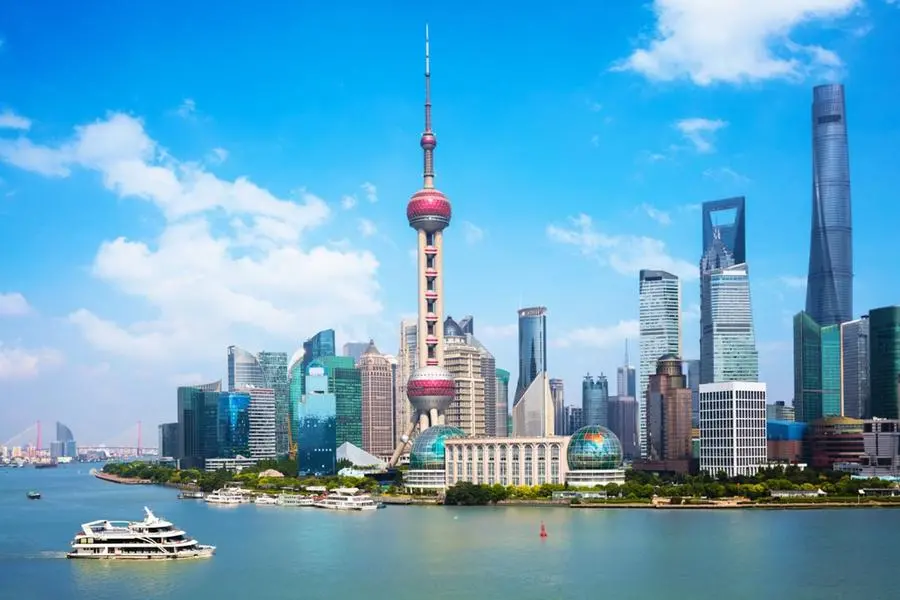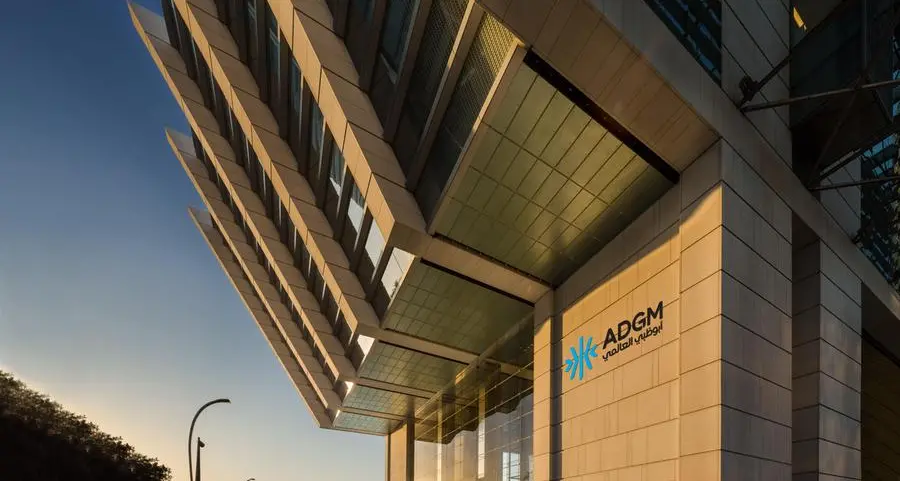PHOTO
Digital generated image of wind turbines, solar panels and Hydrogen containers standing on landscape against blue sky. Getty Images Image used for illustrative purpose.
Africa’s ability to leapfrog traditional power systems and adopt renewables on a massive scale is not a fantasy. In-depth studies from Wärtsilä have demonstrated that with the adequate support of flexible power technologies, ambitious renewable energy objectives in Africa are not only achievable, they also represent the soundest and cheapest strategy for the successful electrification of the continent.
A new power generation paradigm perfectly suited for Africa
There has been much discussion about Africa’s ability to ‘leapfrog’ the way power systems have been built in the western world. For over a century, traditional power systems have been based on centralised power generation, with a limited number of large thermal power plants providing baseload electricity through a massive transmission network. This way to generate power is however coming to an end: the climate emergency is calling for a 180-degrees paradigm shift in which renewables replace thermal power plants as the baseload source of energy.
This new power generation paradigm is, in many ways, a perfect fit for Africa. The continent enjoys some of the highest wind and solar energy resources on the planet, which means that the renewable energy plants built here boast some of the best productivity rates in the world. Almost anywhere in Africa, renewables are the cheapest power generation option available today by a significant margin.
Although relatively ambitious renewable energy targets have been set by most governments across the continent, there is still widespread scepticism that renewable energy, which is intermittent by nature, can provide a reliable source of baseload power. This scepticism is unjustified. With the appropriate deployment of grid balancing technologies like gas engine power plants or energy storage, huge amounts of renewable energy can be built in the system while at the same time ensuring a stable and reliable network. Energy experts at Wärtsilä, who have built 76 GW of power plant capacity in 180 countries around the world, certainly know a thing or two about that.
Building reliable power systems
Yes, renewables are intermittent, but it’s a challenge that we have long known how to solve, providing the need for flexible power capacity is not underestimated.
As intermittent renewable energy becomes the new baseload, the system will have to cope with a large amount of variable power that can disrupt the grid. Flexible power must therefore be available to ramp up production at the same rate that wind or solar production fluctuates, but also to match the fluctuating energy demand within the day. System imbalances can be at times huge, but the system will stay safe as long as renewable energy deployment is matched with corresponding levels of flexible power capacity.
Flexible engine power plants are the only technology designed to work hand-in-hand with renewables, as they can efficiently cope with multiple daily start and stops. They also offer the significant advantage of being able to run on different fuels, from natural gas and heavy fuel oil today, to locally produced hydrogen and biofuels tomorrow as they become competitive and broadly available. Thanks to this muti-fuel capability, not only do engine power plants provide a great hedge against fuel supply risk, but they are also the ultimate “future-proof” technology for energy leapfrogging, as the gas engines can simply be converted to run on green fuels like hydrogen to reach 100% renewables. Engine power plants offer a solid, long-term foundation on which African countries can build modern and resilient clean power systems.
Energy leapfrogging requires a tailormade approach.
Delivering on energy leapfrogging is going to be a complex, multi-decade process. Each country in Africa features its own unique mix of natural resources, geographical opportunities and constraints, population density, alongside a myriad of other parameters. Each country will therefore require its own tailormade and optimal power system expansion plan to accomplish its leapfrogging.
What would such a plan look like in practice? Let’s take Nigeria as an example. Using advanced energy system modelling techniques, Wärtsilä’s analysts have designed a detailed roadmap showing how Nigeria could proceed to build a 100% renewable energy power system and meet its 2060 net zero target.
According to our models, by 2060 Nigeria’s power capacity should consist of 1,200 GW of renewable energy and require a total of 283 GW of energy storage and 34 GW of flexible engine power plants for grid balancing purposes. On the other hand, inflexible sources of power like coal, oil or gas turbine power plants have now become the exception rather than the norm.
For this plan to succeed, Nigeria’s domestic gas must still play a crucial transition role: It will be mobilised as an inexpensive bridging fuel for engine power plants, in support of intermittent renewable energy generation, until these plants can be converted to run purely on green hydrogen in the early 2040’s.
This is the soundest power system from both an environmental and economic standpoint. Our research indeed shows that investing in renewable energy and flexibility from gas engines and energy storage is the most cost-effective way for Nigeria to reduce energy costs, increase energy access and improve grid reliability. For the plan to succeed, however, the country will have to greatly improve its power transmission infrastructure, develop a strong and dependable policy framework, and attract significant investment.
The global shift to renewable energy provides Nigeria, and Africa as a whole, with a unique opportunity to leapfrog the carbon-based power systems that have been the norm in the West. Delivering on this opportunity would represent a giant step forward in the country’s development. But an adequate and carefully planned deployment of flexible power technologies to balance the intermittency of renewables is the sine qua non condition for energy leapfrogging to succeed in Nigeria, as anywhere else on the continent.
About the Author
Marc Thiriet, born in 1967, graduated from ESTA Belfort and IFCI-ESC Clermont (Graduate School of Management), has more than 25 years’ experience in business development and management positions in the energy sector, in Africa, Middle East, Asia, South America and Europe. Marc Thiriet has held various leading positions in Sales and contract negotiations (EPC, O&M) and has managed various P&L overseas with multicultural teams, developing and delivering Services. At Wärtsilä, Marc Thiriet has been Managing Director in Senegal, Service Unit Director for West Africa, Business Support Director for Middle East & Asia, and currently holds the position of Director, Africa at Wärtsilä Energy.
Wärtsilä Energy in brief
Wärtsilä Energy leads the transition towards a 100% renewable energy future. We help our partners to accelerate their decarbonisation journeys through our market-leading technologies and power system modelling expertise. These cover decarbonisation services, future-fuel enabled balancing power plants, hybrid solutions, energy storage and optimisation technology, including the GEMS Digital Energy Management Platform. Wärtsilä Energy’s lifecycle services are designed to increase efficiency, promote reliability and guarantee operational performance. Our track record comprises 76 GW of power plant capacity and 110 energy storage systems delivered to 180 countries around the world.
Copyright © 2022 AfricaBusiness.com - All materials can be used freely, indicating the origin AfricaBusiness.com Provided by SyndiGate Media Inc. (Syndigate.info).
